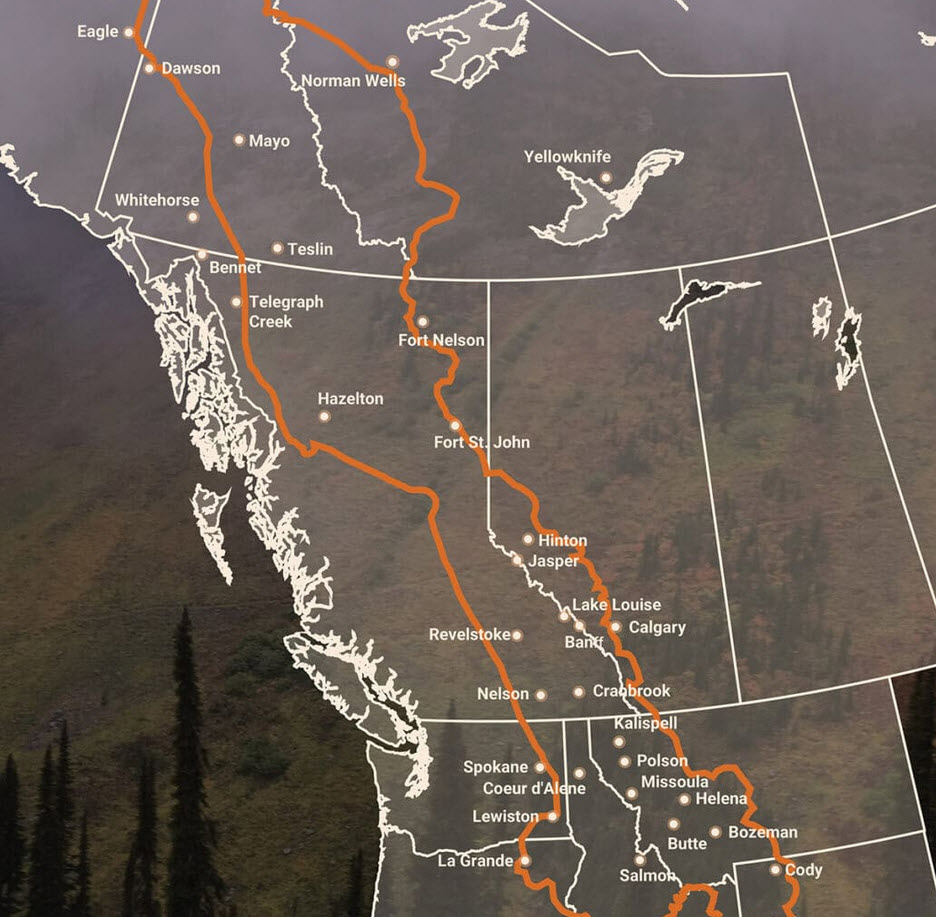The Yellowstone to Yukon Conservation Initiative: A Contemporary Effort to Sustain Biodiversity
Contents
The Yellowstone to Yukon Conservation Initiative (Y2Y) is a transboundary, nonprofit organization committed to the protection and preservation of an interlinked system of wild lands and waters stretching from the United States’ Yellowstone National Park to the Yukon in Northern Canada. This revolutionary endeavor aims to ensure the continuity of this region’s ecological identity, preserve wildlife migration routes, and secure long-term sustainability for both humans and the diverse wildlife population.
For over two decades, the Yellowstone to Yukon Conservation Initiative has been shaping the field of conservation with its innovative, collaborative, and connectivity-focused approach. This transboundary effort demonstrates the power of intra-species cooperation in the face of looming ecological threats. Pioneering a path of sustainable coexistence, Y2Y provides a blueprint for future conservation efforts worldwide.

A vision of connectivity
At the heart of Y2Y’s initiative is the vision of establishing seamless connectivity across approximately 2,000 miles of mountainous terrain. This ambitious plan prioritizes the creation of a “network of wild lands and waters” to support the migratory needs of large mammals and enhance the survival odds of plant species and smaller animals. It is a project designed with a nod towards preserving the ecological integrity of an expansive region critical to North America’s environmental health.
About Yellowstone
Yellowstone National Park comprises more than 3,468 square miles in western United States, chiefly in the north-western corner of Wyoming but also in parts of Montana and Idaho. It was established in 1872 and is thus the oldest national park in all of the United States. The park is home to many types of biomes, including a lot of subalpine forest, and is famous for its geothermal feature – such as the Old Faithful geyser. The animals in Yellowstone have adapted to fit various nisches in the varied landscapes of this park, which is domated by mountain ranges, canyons, rivers, and lakes, and where large expanses are either forests or grasslands. A multitude of animals species have been documented in the park, including many that are endangered or threatened. Examples of present megafauna are bison, elk, wolves, cougars, and grizzly bears.
About Yukon
Yukon (formerly the Yukon Territory) is the westernmost of Canada’s three territories, bordering Alaska to the west and northwest for over 750 miles, the Northwest Territories to the east and British Columbia to the south. The northern coast of Yukon is on the Beaufort Sea, a marginal sea of the Arctic Ocean.
A large part of southwestern Yukon falls within the Kluane National Park and Reserve, and Yukon is also home to the Ivvavik National Park and the Vuntut National Park in the north. The Yukon Government maintains a series of territorial parks, including Coal River Springs Territorial Park, Tombstone Territorial Park, Herschel Island Qikiqtaruk Territorial Park, and Fishing Branch Ni’iinlii’njik Park.
Exampels of animals that live in Yukon are Yukon wolf, wolverine, lynx, coyote, bear, caribou, Yukon moose, Dall sheep, and marmots. The dominating tree species in Yukon are black spruce and white spruce. Many trees are stunted due to the severity of the climate.
Sustaining wildlife corridors throughout north-western North America
One of Y2Y’s noteworthy achievements is its focus on sustaining wildlife corridors- vital pathways that give wildlife the space to roam, migrate and adapt to changing climates. It has driven efforts not only to preserve but also restore such corridors, recognising that animals such as grizzly bears and wolverines, who require large territories for survival, are most vulnerable without them. The organization works with local communities, governments, and indigenous peoples to manage these corridors, making it a joint responsibility to maintain ecological health.
Promoting coexistence
Through its key mission of maintaining ecological connectivity, the Y2Y initiative promotes peaceful coexistence between humans and wildlife. Aware of the challenges faced by communities living near wildlife habitats, Y2Y actively pioneers projects encouraging the harmonious sharing of these spaces. They target human-wildlife conflicts, prioritizing bear-smart communities, and responsible road planning that considers the migratory patterns of wildlife.
Groundbreaking collaborations
Fuelled by an innovative, collaborative approach, Y2Y works with various stakeholders to achieve its goals. Partnerships with researchers, local communities, other non-profit organizations, and governmental bodies allow for comprehensive, science-led conservation strategies. These partnerships are underpinned by trust, mutual respect, and a shared vision for a thriving Y2Y region.
The future of conservation
The Yellowstone to Yukon Conservation Initiative stands as an exemplary model of transboundary cooperation and conservation. As climate change continues to alter natural landscapes and disrupt ecological processes, the need for large-scale, connected conservation grows ever more urgent. Y2Y is, therefore, not merely a project but a future-oriented philosophy that highlights the intersection of ecology, economy, and society in conservation efforts.